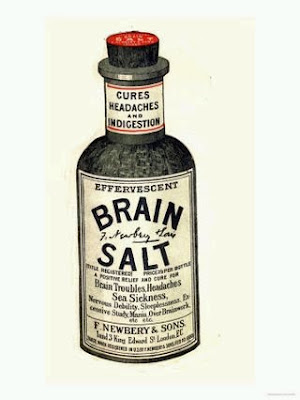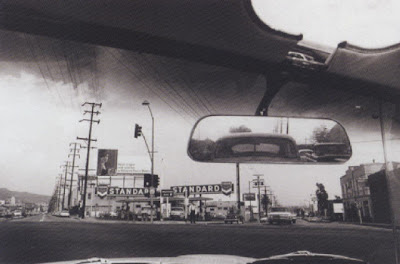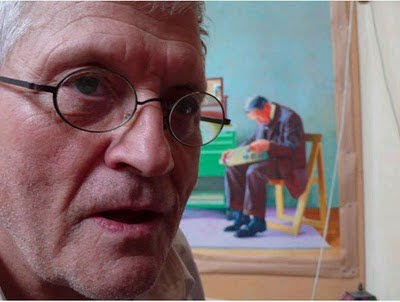
MEMPHIS, TN.- Elvis Presley's beloved White Knabe Grand Piano, as featured in his music room at Graceland from 1957 to 1969, is expected to bring $1,000,000+ as the centerpiece of Heritage Auctions' Signature® Elvis Memorabilia Auction, Aug. 14, in Memphis, TN.
“This elegant musical instrument, so well-loved and played by Elvis, is presented with wonderful provenance back to the 1930s,” said Doug Norwine, Director of Music & Entertainment Auctions at Heritage, “not to mention that it was an emotionally-charged prized possession of the King himself.”
The Knabe piano, besides being owned by Elvis for more than a decade, is a storied set of keys that occupied the position as the house piano in Ellis Auditorium in Memphis, TN from the early 1930s through 1957, when Elvis himself bought it and had it refurbished in white. Not only is it an instrument that Elvis loved to play in his own home, it is also the very piano played by his favorite gospel performers at revivals that Elvis attended as a boy, during which, as an enthralled member of the audience, he surely must have dreamed of his own future stardom.
“During the 1930s, 1940s, and early 1950s, the stage at Ellis Auditorium was graced by the greatest local and national touring musical acts of the period including W. C. Handy, Duke Ellington, Count Basie, Cab Calloway, and certainly many, many others,” said Norwine. “In 1957, this Knabe grand piano was sold during a remodeling project at the Ellis. He could have afforded any piano on the planet, but when Elvis heard this one was for sale, he didn’t hesitate.”
The piano is the emotional centerpiece of an auction that features a number of truly spectacular pieces of Elvis memorabilia, more than 270 in all, that reads like nothing less than a Pop Culture survey of the mid-Twentieth Century, when Elvis was ubiquitous and easily one of the greatest stars on the planet.
Among these important pieces, it is hard to imagine one that had a greater impact on the direction of both Pop Culture and Rock and Roll than Elvis’ legendary 1955 original personal services contract with RCA Records, signed at Sun Records on Nov. 21 by Elvis, his father, Colonel Tom Parker and an RCA Executive. It is estimated at $150,000+.
“This was the deal that led to the transformation of a 20 year-old Memphis boy from a popular Southern act recording on the regional Sun Records label,” said Norwine, “into an international superstar with the full power of the large and prestigious RCA label behind him. This astonishing document is considered by many to be the most desirable, important, and valuable recording contract ever signed. There is not an Elvis fan anywhere that is not familiar with this document; there is not an Elvis fan anywhere that wouldn't want to add it to his or her collection.”
There can be almost no mention made of The King without mentioning his famous Memphis mansion Graceland, and this auction features a key piece of Graceland memorabilia: the Elvis Presley and parents signed Graceland Sales Contract, a three-page real estate purchase agreement for Graceland, dated March 26, 1957. It carries an estimate of $35,000+.
Another one of the truly premier lots of the auction, and certainly the most personal, is an Elvis handwritten and signed four-page letter written to his then-girlfriend Anita Wood in 1958, just after Elvis entered the army, estimated at $75,000+.
“This letter was penned just six weeks after Private Presley arrived in Germany,” said Norwine. “Elvis reveals himself to be more the typical lonely soldier missing his girlfriend back home than the nation's number one entertainment attraction.”
When Elvis wrote he usually kept it short, rarely using more than one page. This is not only one of the longest letters by Elvis known to exist, it is also among the most emotional. The complete text of this fascinating letter is found in Elvis - Word for Word (Osborne Enterprises, 1999), but only the actual handwritten letter can convey the heartfelt outpouring of raw emotion that Anita Wood read as Christmas approached in 1958: "It sure is going to be a blue Christmas this year. But in 15 short months it'll be over and as General MacArthur said, 'I shall return.'"
The 1976 Triumph TR-6 Convertible that Elvis gifted to Ginger Alden, his main lady at the time of his death, is included in the auction, looks as fresh today as it did when Elvis presented it to Alden, and is estimated at $70,000+. A pair Elvis' custom gold-framed sunglasses, made in West Germany by Neostyle, with tinted lenses and 14k gold "TCB" lightning bolt logos at the temples, customized for Presley by his personal optician, Dennis Roberts, during the early 1970s, is expected to bring $20,000+, while Elvis’ .22 Harrington & Richardson Revolver, purchased by him at Tiny's Gun Shop in Palm Springs, CA, serial number 466218, is estimated at $8,000+, and Elvis’ personal address/phone book dating from the mid-‘50s to the early ‘60s – something Elvis kept close to him at all times, loaded with the address and phone number of many big Hollywood stars, plus personal notes (want to know what kind of cigars Colonel Tom Parker preferred?) – is estimated at $3,500+.
Further highlights include, but are not limited to:
Elvis' Opal Ring (Lowell Hays, 1970s): Quite possibly the most beautiful personal effect of Elvis offered in the auction. This stunning opal ring was one of Elvis' favorites, sold to him by famed Memphis jeweler Lowell Hays in the 1970s. The impressive opal is approximately 24 x 20 mm and is surrounded by 34 full cut diamonds with a total weight of 1.45 carats. The ring is 14k gold, with the top an antique broach that's been soldered to the shank. Estimate: $50,000+.
Elvis Presley's Cherub Lamps from His Beverly Hills Home: This striking pair of lamps was imported from Italy by Elvis to add just the right touch to his bedroom suite in Beverly Hills, California. The lamps' bases are gold-painted cherubs holding floral vines leading into four-bulb candelabras. Estimate: $35,000+.
Stay Away Joe - Special Location Radio Program LP (1967): All evidence indicates RCA needed only one copy of this LP -- and made only one copy. That makes it the most sought-after, most valuable Elvis record on the planet. It was made for a one-time broadcast by only one radio station -- KVIO, a Cottonwood, Arizona station that served the Sedona area (where Stay Away, Joe was filmed). Estimate: $30,000+.
Elvis Worn Belt with Photos and Rare Interview Acetate (circa 1956): Elvis must have loved this slim-style belt a lot, as he's wearing it in a lot of photos. The belt appears to be a custom-made item, with no size or any other markings. Included are eight photo prints of Elvis, five prominently featuring the belt (two in color), plus a 1978 issue of Parade Magazine with vintage photos of Elvis (one wearing the belt), and a laminated page from the St. Petersburg Times for Sunday, September 16, 1956, with a photo of Carmelita DeGormar being presented with the belt as winner of a radio contest. Included with the belt is a 12" acetate recording featuring a five-plus minute interview with Elvis that was also presented to Miss DeGormar, as shown in the photo. Estimate: $20,000+.
Elvis Presley's Show Jumpsuit by Nudie Cohn: This pink jumpsuit with hand-sewn jewels and rhinestones was custom-made for Elvis by legendary tailor Nudie Cohn. A rare and fantastic piece of Presleyana. Accompanied by a letter of authenticity from Nudie Cohn. Estimate: $8,000+.
Elvis Presley's Loving You Slacks: This pair of maroon Western-style slacks with white piping was a back-up pair made by legendary tailor Nudie Cohn for Elvis during production of his second feature film (and his first Technicolor appearance) in 1957. Nudie's personal label is sewn onto the waistband, and a second Nudie label with Presley's name and a Paramount studio stamp are on the outside lining of one of the back pockets. Estimate: $4,000+.

Images Shown:
Elvis Presley's white grand piano which is going up for auction in Memphis, Tennessee, USA, on 14 August 2010, expected to fetch more than 1 million dollars (767,000 Euros) auctioneers have said. The white Knabe piano was owned and played by Presley for a decade. The singer bought it in 1957 from the Ellis auditorium in Memphis where it had been played by visiting gospel performers for more than 20 years. The piano was placed in Graceland's music room until 1969.



















































